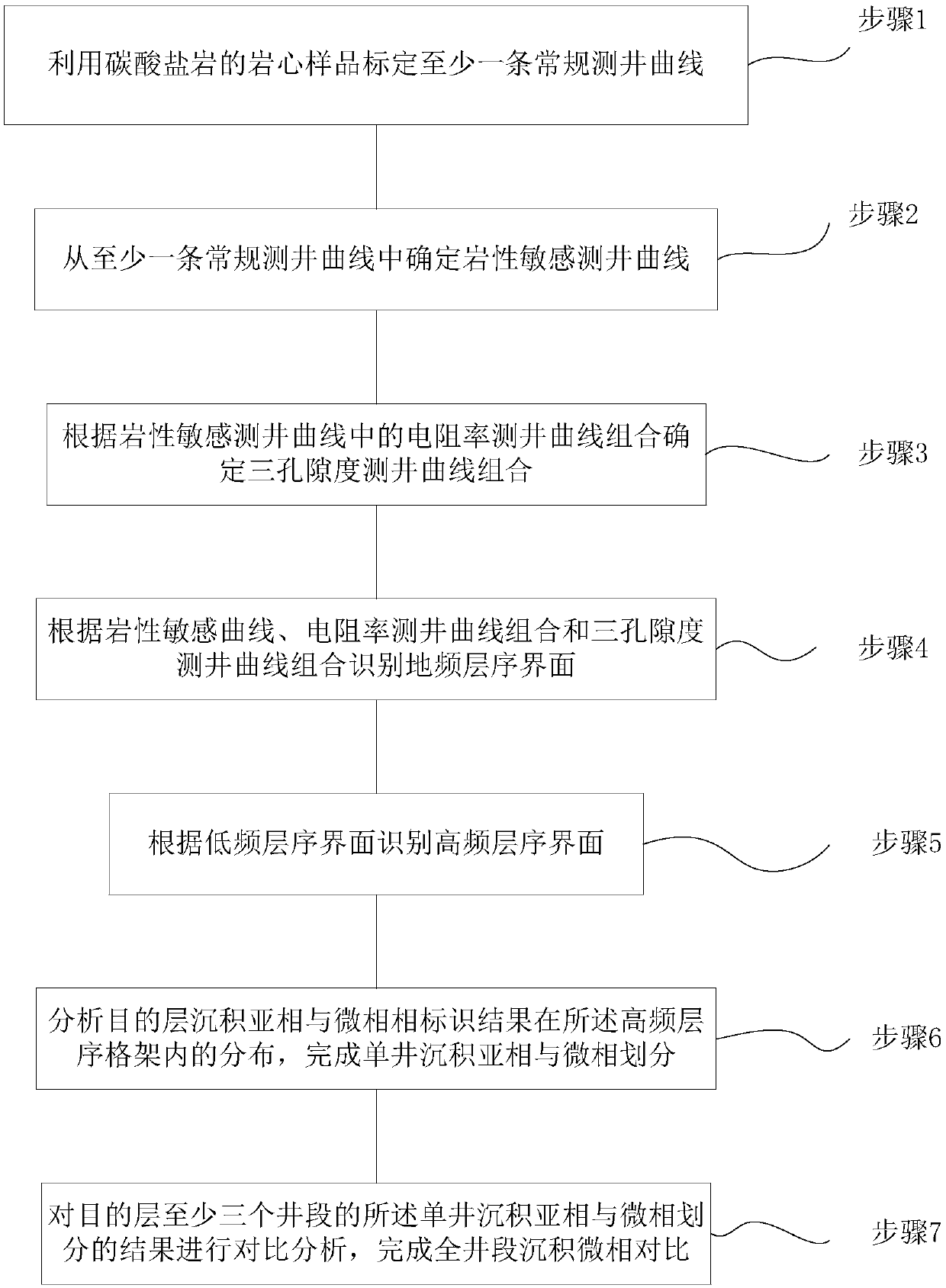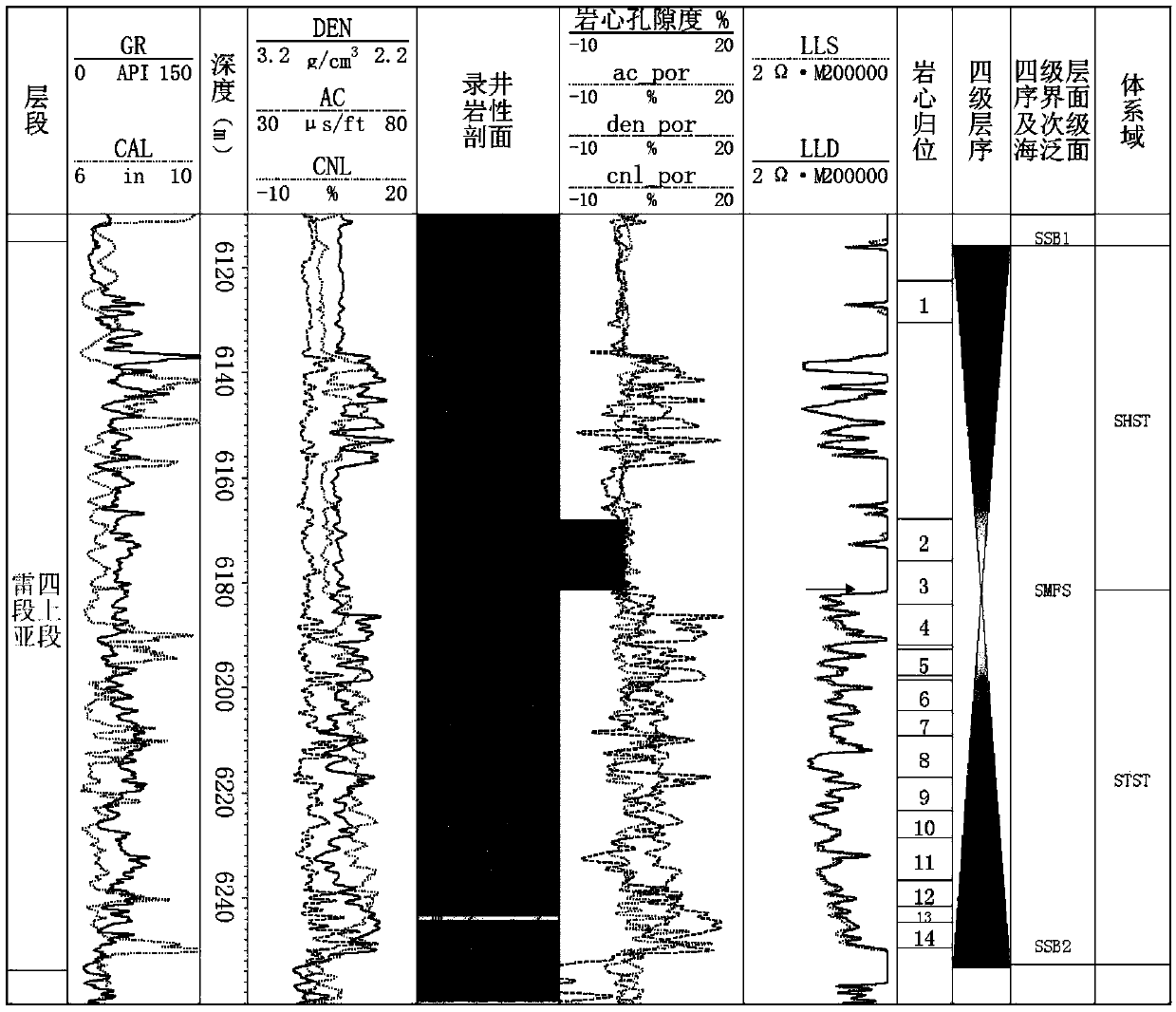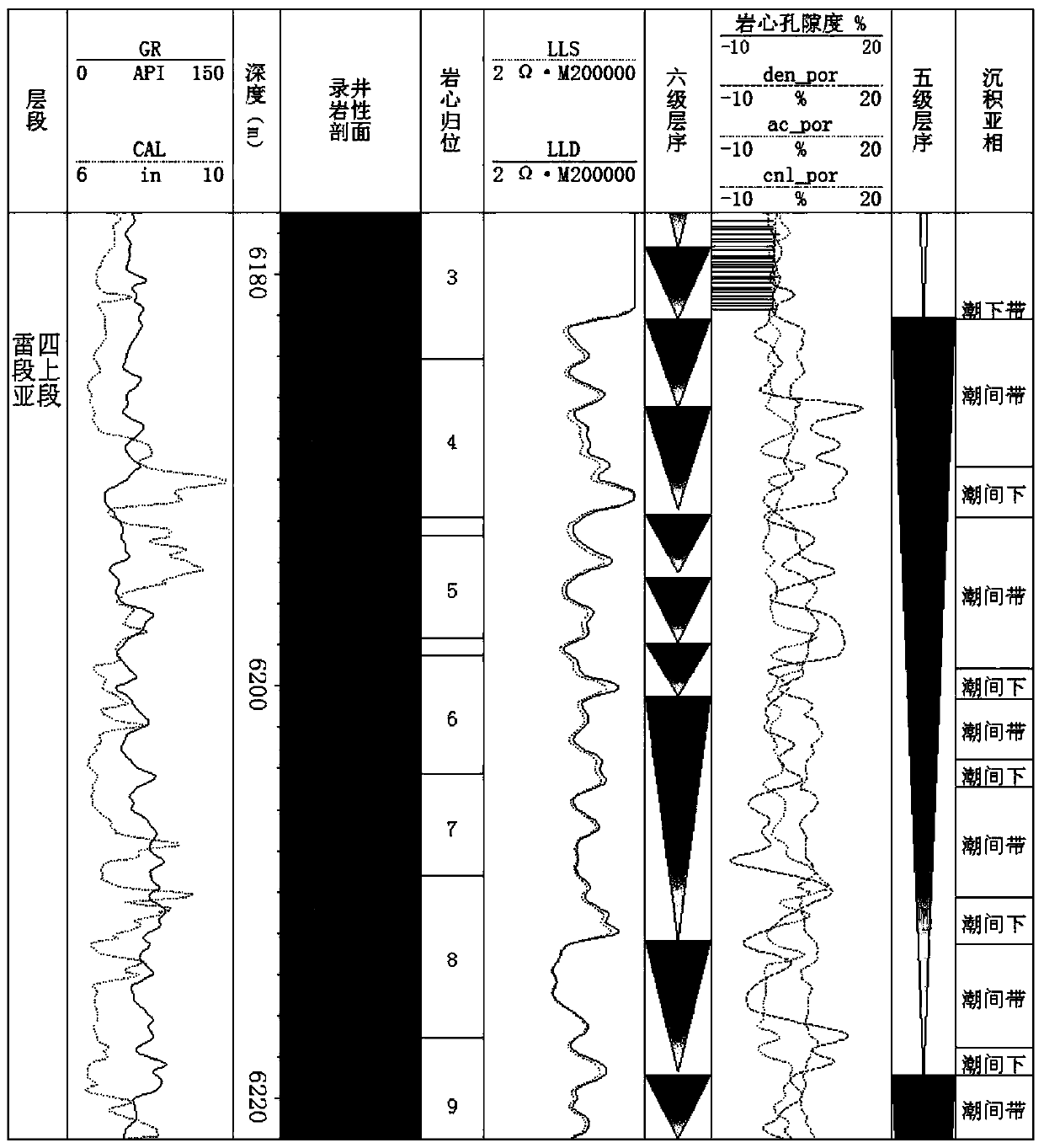Identification method of sedimentary microfacies mode of carbonate rock high-frequency sequence framework
A carbonate rock and sedimentary microfacies technology, applied in the field of identification of sedimentary microfacies pattern, can solve the problems of lack of dynamic sedimentary microfacies pattern, single static sedimentary pattern, etc.
- Summary
- Abstract
- Description
- Claims
- Application Information
AI Technical Summary
Problems solved by technology
Method used
Image
Examples
Embodiment Construction
[0024] The present invention will be further described below in conjunction with accompanying drawing.
[0025] In the present invention, the low-frequency sequence refers to the first-order sequence, the second-order sequence, the third-order sequence and the fourth-order sequence, and the high-frequency sequence refers to the fifth-order sequence and the sixth-order sequence.
[0026] figure 1 It is a schematic flowchart of a method for identifying sedimentary microfacies patterns of high-frequency sequence frameworks of carbonate rocks provided by the present invention. Such as figure 1 As shown, the method includes:
[0027] Step 1. Using the core sample of the carbonate rock target layer to make a thin slice of the core sample, and calibrate at least one conventional logging curve according to the core sample of the carbonate rock.
[0028] Step 2. Determine the lithology-sensitive logging curve from at least one conventional logging curve, wherein the lithology-sensit...
PUM
 Login to View More
Login to View More Abstract
Description
Claims
Application Information
 Login to View More
Login to View More - R&D
- Intellectual Property
- Life Sciences
- Materials
- Tech Scout
- Unparalleled Data Quality
- Higher Quality Content
- 60% Fewer Hallucinations
Browse by: Latest US Patents, China's latest patents, Technical Efficacy Thesaurus, Application Domain, Technology Topic, Popular Technical Reports.
© 2025 PatSnap. All rights reserved.Legal|Privacy policy|Modern Slavery Act Transparency Statement|Sitemap|About US| Contact US: help@patsnap.com



